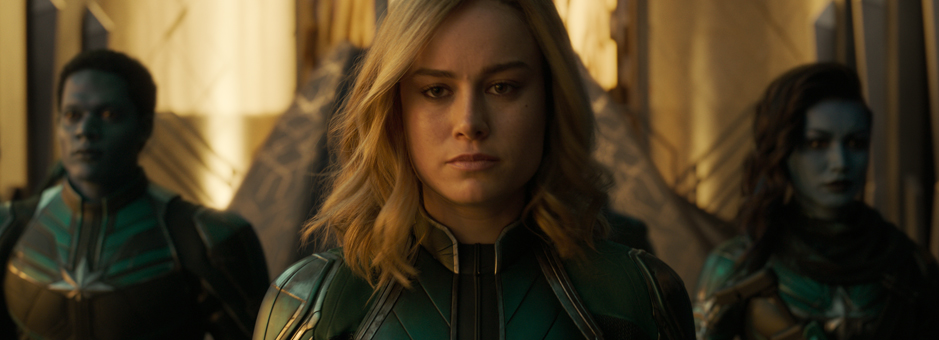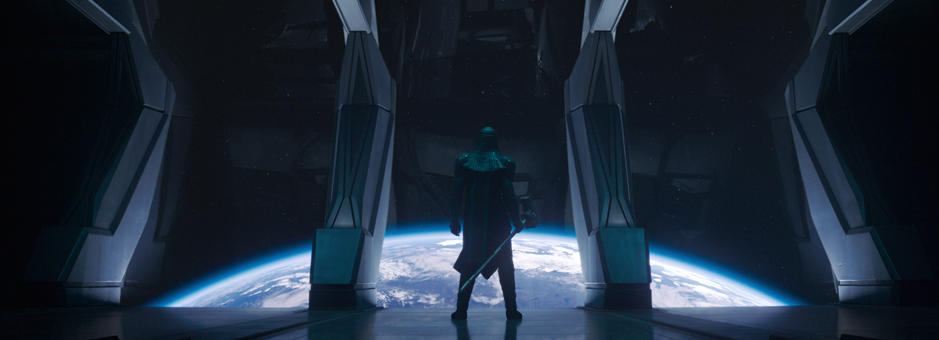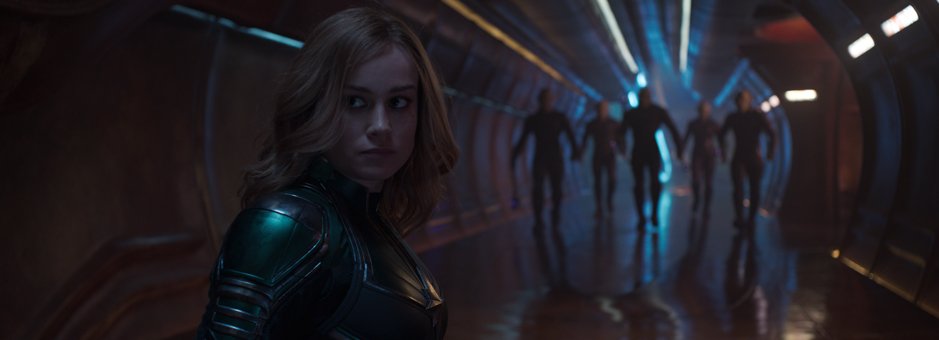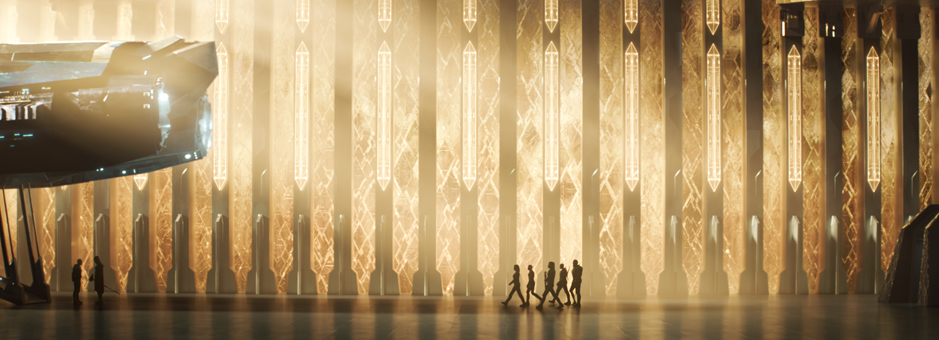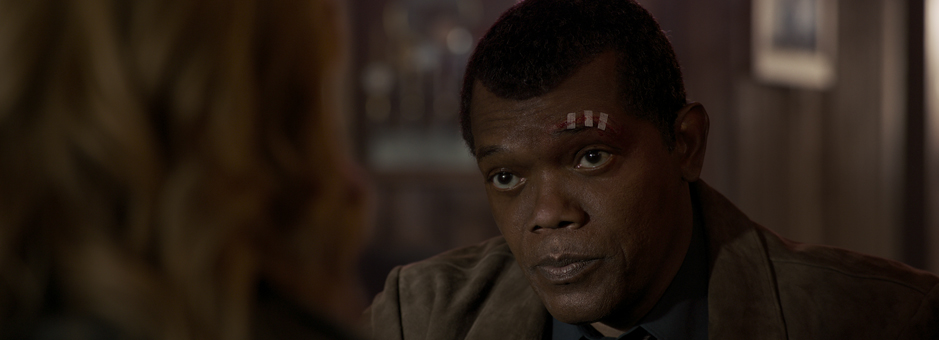Case Studies
Finishing ‘Captain Marvel’
A conversation with colourist Doug Delaney
Recent blockbuster Captain Marvel was finished at Technicolor in Los Angeles, with Doug Delaney at the helm.
Doug started his career in VFX before specialising in digital intermediate finishing – with many feature films in his repertoire. Even now, his goal is to continue evolving and polishing his own techniques and methodologies.
Doug came to this project relatively late in post-production. “It’s a huge technical, effects-laden film,” he said. “From a colour point of view, I got involved in it very late by comparison to other projects.
“In the Marvel cinematic universe, there’s already an established visual language. The colour of particular items is set – Captain Marvel’s suit needs to be a very specific colour regardless of the environment, because this is intrinsic to an iconic brand.”
He made the point that, in a movie that depends so much on complex effects, the VFX pipelines are set up maybe a year before the main post -production. This includes look development, which comes inevitably from the VFX as much as the live action photography.
“The effects are carefully crafted too,” he added. “Look development and the lookup tables have been distributed because you have vendors literally all over the world working on shows like this simultaneously.
“General looks have already been approved by the directors and the VFX supervisor prior to the finish. It’s different than another type of film where you’re doing look development in the grading suite during the final grade. Here you’re very much a steward of the digital effects.
“Your role in these situations is to ensure that the VFX comes through,” Doug explained. “You may enhance their consistency from shot to shot. And of course, you embellish and add to the sequence . But in general, when the grade gets too heavy handed you can begin to diminish the quality of the effects from a creative point of view.
“We were using some new tools in Baselight like Base Grade, which allows you to really refine the image in a rather unique way. And Base Grade really is a game changer in how I approached the grade for HDR and EDR.”
One important task on movies such as this is to develop the sequence by smoothing the transition between effects. So Doug found himself using some of the powerful relighting tools in Baselight to ‘massage’ effects to help the story flow. “You’re saying ‘this works really well, but what if we add some interactive light because these are all visual effects shots from cut to cut, and maybe we need to help join the cuts a little’.”
Another significant change in the way that VFX movies are made today is that the grading suite also takes on much of the compositing and finishing. “We’re no longer colourists – we’re finishers,” is Doug’s view.
That in turn means that the lead colourist is not only responsible for the whole look of the finished movie, he also manages a team of experts to ensure that everyone is cohesively working towards the same goal – on this project, using the categories and notes system within Baselight to communicate specific needs, create task lists, and keep track of progress.
Doug and VFX supervisor Chris Townsend were the principal arbiters of the way the movie looked. But as supervising finisher, Doug relied on the creative team working with him.
“Chris and I were the ones grading the film to the point where we would present to the filmmakers and to the Marvel creative team,” Doug said.
“Jeff Pantaleo was the second colourist, who helped me on the 2D version. Then there were a few other specialists – Gray Marshall, Dave Franks , Travis Flynn, and Jason Fabbro – helping me with tracking, rotoscoping and all the technical in - between work as well as the home video versions.”
The team also helped in creating the multiple deliverables, which are an inevitable part of finishing a blockbuster. “Before you’ve finished the 2D version you’ve already started the stereo 3D version, and some of the guys would shift over to that. Then before we finished the stereo version we’d start the EDR, the laser projection, HDR, IMAX version etc. So there are probably 10 or more versions of each film.
“I like to say it’s like spinning plates,” Doug said. “The more plates the more complicated it gets, so you really need a team of people to manage it all.”
He praised the functionality within Baselight to be able to manage looks consistently across versions. “We would finish the 2D then import that into stereo. Then, if we saw something we would back that colour into the 2D version and propagate it throughout. Without Baselight that could become very, very complicated.”
Baselight also came into its own because of its power as a finishing tool. Captain Marvel was conformed in Baselight as well as graded. “That’s really almost the only way to manage it, because therefore you can propagate both ways all the information, whether it is colour, matte work, or the VFX versions,” he explained.
“One of the extraordinary things about Marvel is that they are always refining – they are never done; they keep looking for perfection and the best result,” Doug said. “That also goes for editorial: they’re making little changes up to the very last minute. So, having the flexibility of doing everything with the native content – that allows us the ability to make these last-minute changes really easily.”
On a movie of this scale and scope, were there any particular scenes that were a challenge or a delight to accomplish? The first Doug suggested was not even an effects sequence: it was a dusk scene but it needed to be shot over the course of several days, and the golden hour light is never quite the same from day to day.
“The sun’s going down in Louisiana. It’s an emotionally powerful scene,” Doug explained. “There was some inconsistency, so we needed a lot of grading techniques to get it all looking even, so the emotional heart is there without distractions. It’s a very common thing we have to deal with as colourists, but it could impact the film as much as a giant VFX scene”.
The other example he cited was a space battle from the third act. “The VFX are extensive and beautifully crafted,” he said. “But there were some over-the-shoulder shots where we added a lot of grading and interactive lighting, almost finishing the visual effects work in Baselight. We’re adding some depth: adding lighting to reverse shots to reflect the effects added to the primary shot, and sell the idea from cut to cut.”
The clear message from Doug Delaney is that, in today’s post world, Baselight is about more than simple colour, and that FilmLight delivers what the creatives need because they understand the commercial and creative pressures as well as the colour science behind the craft.
“One of the great things is that FilmLight is willing to listen and observe ,” he concluded. “For instance for this particular film, Jacqui Loran and Sam Lempp, both from the support team at FilmLight, were in the room with us all the time.
“They want to understand the pressures of the client session and the real application of their tools – to understand the actual implementation of those tools in a working and creative environment. They really are evolving the colour science and toolset of Baselight to meet the changing needs and demands of the colourist and modern technologies.”
“One of the extraordinary things about Marvel is that they are always refining – they are never done. So having the flexibility of doing everything with the native content – that allows us the ability to make last-minute changes really easily.”
Download
Captain Marvel Case Study (PDF)




